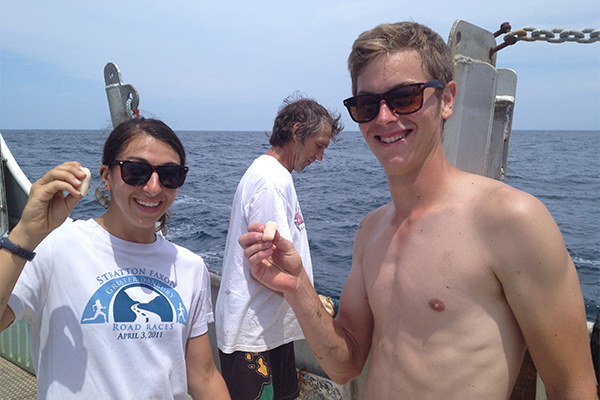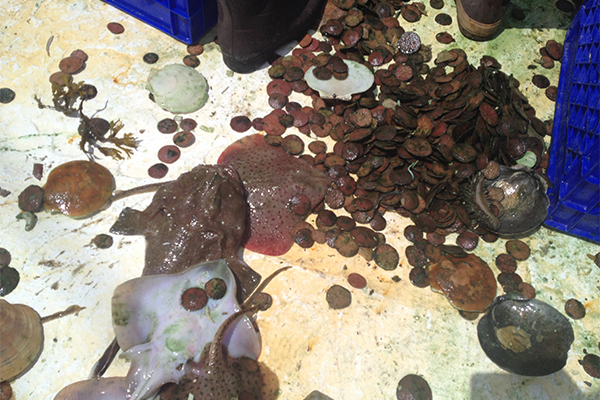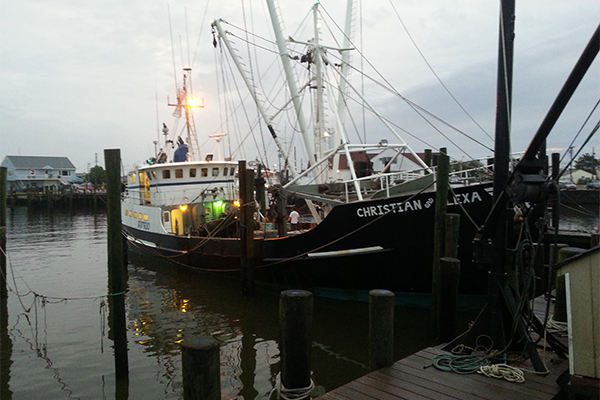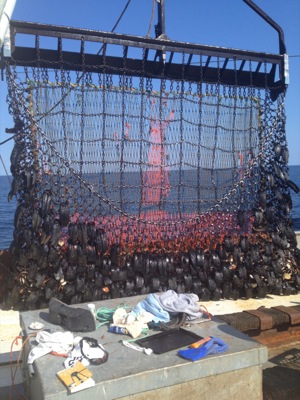

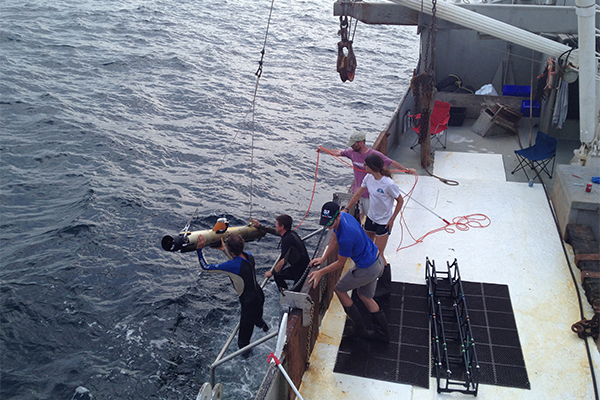
The big catch
Research set-aside helps sustain Atlantic sea scallop fishery
7:50 a.m., July 29, 2014--A recent article in Nation’s Restaurant News calls the scallop “the mollusk of the moment,” but just 20 years ago, the U.S. fishery for Atlantic sea scallops was unsustainable, with the population near record lows and fishing at a record high.
Fortunately, the industry underwent a complete turnaround in the late 1990s through the collaborative work of scallop fishermen, scientists, fishery managers, and environmentalists. Now, a research set-aside program, funded entirely by proceeds from selling a portion of the annual sea scallop quota, is helping to ensure that the fishery remains healthy.
Research Stories
Chronic wounds
Prof. Heck's legacy
Art Trembanis, associate professor in the College of Earth, Ocean, and Environment at the University of Delaware, is one of more than 30 researchers from 14 organizations to be awarded a research grant through the 2014-15 set-aside program, which is administered by the National Ocean and Atmospheric Administration (NOAA). Trembanis leads the Coastal Sediments, Hydrodynamics, and Engineering Lab (C-SHEL) at UD.
Collaborators on the two-year $1.6-million project, which is addressing incidental mortality in sea scallops exposed to commercial dredging, include Doug Miller, a benthic oceanographer and ecologist in the School of Marine Science and Policy at UD, David Rudders from the Virginia Institute of Marine Science, and brothers Arthur and Kenneth Ochse, captains of the F/V Christian and Alexa.
Dredging it up
Atlantic sea scallops are the nation’s highest-valued single species commercial fishery, with the industry valued at more than $500 million a year.
Trembanis explains that the popular mollusks are typically harvested by dredging, with rings on the equipment designed to catch mature scallops and allow small ones to fall through.
Some are inevitably lost to the process. For example, smaller scallops that pass through the rings may get raked over and crushed by the dredge. Others that are too small to keep may get caught by the dredge anyway and then die after they’re returned to the ocean.
“While scallops are one of the most lucrative fisheries on the East Coast, dredging can be a destructive sampling method that damages much of the seafloor and leaves many animals compromised,” says Danielle Ferraro, a master’s candidate in oceanography who is part of the research team.
By using a combined research platform consisting of a commercial scallop dredge and an autonomous underwater vehicle (AUV), the researchers hope to quantify the incidental mortality of scallops as a result of dredging so that the fishery can be more effectively managed.
Highway Under the Sea
To begin work on the project, Trembanis and his team recently completed an eight-day research cruise 60 miles off the coast of Bethany Beach, Delaware, the first of several such trips they will take over the next two years.
In just over a week, the AUV captured almost 200,000 sequential images of the sea floor in 20 mission areas, each about the length of The Green on the UD campus and the width of a major interstate highway.
The AUV travels across the sea floor taking photos, side-scan sonar and video — both immediately before and after the dredge passes through — to gather information about its impact on the sea floor and the marine life there.
“We basically mapped an underwater four-lane highway and told the fisherman they had to drive on it — with precision,” Trembanis says. “With waves crashing on the boat and no ‘road’ signs, it’s a pretty challenging assignment.”
But the research crew was onboard the F/V Christian and Alexa with the Ochse brothers, who are experts in the art of navigating the scallop-rich waters of the Atlantic Ocean.
“Together, Art and Ken have more than 75 years of experience, and they bring a wealth of knowledge to the project,” Trembanis says. “They know these areas the way farmers know their fields. They know where it’s sandy, where it’s muddy, and where there are snags — and we’re talking about a harvesting area that’s larger than the adjacent coastal land area.”
Direct impact
Trembanis welcomes the fishing boat captains as co-investigators on the project.
“They’re intelligent, well educated, and successful,” he says. “And they’re as pumped about the science as we are because the work directly impacts their livelihood.”
The students on the team are also benefiting from their involvement with a project that impacts not only the fishermen but also the economies of communities in the region.
“This project is unique because we’re dealing directly with the fishery that is influenced,” says Ken Haulsee, an undergraduate in geology who is interning with Trembanis. “Also, it’s great to be on a project that’s self-sustaining because profits from the scallop fishery directly fund the research. I feel very lucky to be assisting on this project because it has such a tangible impact on an economically important fishery.”
The Future
Next year, Trembanis and his team year will travel to a harvesting area off the coast of New England, where the seabed is harder and more cobbled than in the Mid-Atlantic.
“We want to see whether the effects are different there than in the sandier areas off the coasts of Delaware and New Jersey,” he says.
Ferraro, who is interested in observing the response of a species and its habitat to a human interference, hopes that clarifying the physical impact of scallop dredging will lead to changes in how the mollusks are caught.
“I’d like to see the development of a harvesting method that minimizes population impact,” she says. “For now, though, we hope to provide a more accurate estimate of incidental mortality so that scallopers and fisheries managers can continue to seek out best practices.”
C-SHEL on YouTube
Click here to see the school of sharks the team encountered one day just beneath the boat.
Click here to watch the dredge being pulled across the seafloor.
Also, for a video of the team working with an AUV, click here.
About the set-aside program
Thirty-one researchers from 14 organizations in Massachusetts, Maine, Delaware, and Virginia were awarded 2014-15 research grants focused on Atlantic sea scallops. The researchers are working on 16 projects totaling just over $16.5 million. Organizations involved include universities, non-profit research and education foundations, a fish hatchery, commercial fishing vessels and businesses, and a state fisheries agency.
Research set-aside (RSA) programs are unique to federal fisheries in the northeast region, which includes the Mid-Atlantic. Under RSAs, no federal funds are provided to support the research; rather, funding is provided by granting the awardees set-aside allocations for certain quota-managed or days-at-sea managed fisheries. The allocations are then harvested and sold or auctioned to provide funds for the research.
Special committees of the regional federal fishery management councils set the research priorities, and researchers compete for funding. NOAA Fisheries manages the competition, award, and reporting process but does not retain or use any research set-aside funds.
The research results will be used to improve sea scallop recruitment and mortality, assess the impacts of future ocean acidification and warming on scallop shells and meat weights, assess the abundance and distribution of scallops in several areas, develop fishing gear that reduces bycatch of flatfish and sea turtles, and utilize new technologies for better sampling and monitoring of sea scallop populations and their habitats.
Article by Diane Kukich
Photos courtesy of Art Trembanis




